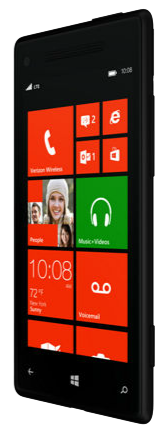 As part of my day job, I worked for a telecommunications equipment & cell phone OEM manufacturer. So it was my pleasure to have the opportunity to try out and review, courtesy of Verzion Wireless, a Windows Phone 8 device, namely the HTC 8X. Prior to getting my HTC 8X to review, I had read the reviews of Windows Phone 8, and had read that the HTC 8X was essentially the best (which is bad news for Nokia …)
As part of my day job, I worked for a telecommunications equipment & cell phone OEM manufacturer. So it was my pleasure to have the opportunity to try out and review, courtesy of Verzion Wireless, a Windows Phone 8 device, namely the HTC 8X. Prior to getting my HTC 8X to review, I had read the reviews of Windows Phone 8, and had read that the HTC 8X was essentially the best (which is bad news for Nokia …)
I’ve always been a fan of HTC since they were the first to take a bet on Android were the first to launch an Android-based smartphone with the T-Mobile G1. Personally, I use my company’s own Android smartphone on the Sprint network (where there is still spotty 4G LTE coverage in Silicon Valley). I’ve played a little bit with Windows Phone 7, but this was my first chance to really try a Windows Phone 8 device.
Since I work in the industry, I had a friend who uses the HTC 8X as his primary phone (or one of his that he rotates). The HTC 8X has a nice thin feel to it, quite solid and nice build quality, though if you’re into removable batteries (a friend of mine swears on them – me, not so much), you’re out of luck with the 8X. The exterior is covered with a rubberized feel to it, which felt fine to me, unlike the hard plastic I am used to with most smartphones I’ve tried out.
Out-of-the-box set-up was pretty easy – I did already have a Microsoft account (Hotmail, from way back when before Microsoft bought them) and was easily also able to setup my Gmail and Calendar with my Google accounts.
The biggest change to get used to with Windows HTC 8X is the “metro” user interface – the live tiles. The tiles are essentially shortcuts to access applications, but can also dynamically present information – like how many unread emails you have. The live tiles are a different approach to what one is familiar with Android or the iPhone. When I tried Blackberry 10, their UI reminded me a lot of Android’s UI. Of course, being an early PalmPilot user back in 1996, I think iOS, Android and other OS’s are all very familiar in their approach.
The apps that I use the most beyond the basics (phone, contacts, SMS, settings, calendar) are Facebook, Twitter, Foursquare and LinkedIn – which were all available in the Windows Phone Marketplace and didn’t take a lot of learning to get used to.
The Verizon Wireless 4G LTE coverage and speed was excellent in the greater Silicon Valley region. I am really disappointed that Sprint hasn’t been able to more quickly migrate from their 4G WiMAX network to LTE.
I didn’t have a chance to extensively test out the camera nor make any voice calls, so I can’t comment on those features.
One thing that I do miss on the my HTC 8X is having an alternative virtual keyboard – namely Swype, which is a standard keyboard provided as an option on Sprint Android smartphones. The “pecking” on the Windows Phone 8 keyboard reminded me of my past experience with the iPhone keyboard.
Overall, I thought the HTC 8X was a great phone. However, I’m not sure if I would “switch” from Android, but if this was my first smartphone and I needed a simple and easy phone to use, I would seriously consider Windows Phone 8 and the HTC 8X. However, if you’re looking for a wide variety of apps, unfortunately for you, app developers will probably develop first for both iOS / iPhone and Android before developing for Windows Phone. If you’re okay with that, I would consider the HTC 8X.
Note: I did not receive monetary compensation for this review, but I did receive complimentary usage of an HTC 8X with Verizon Wireless service for 2 weeks.








